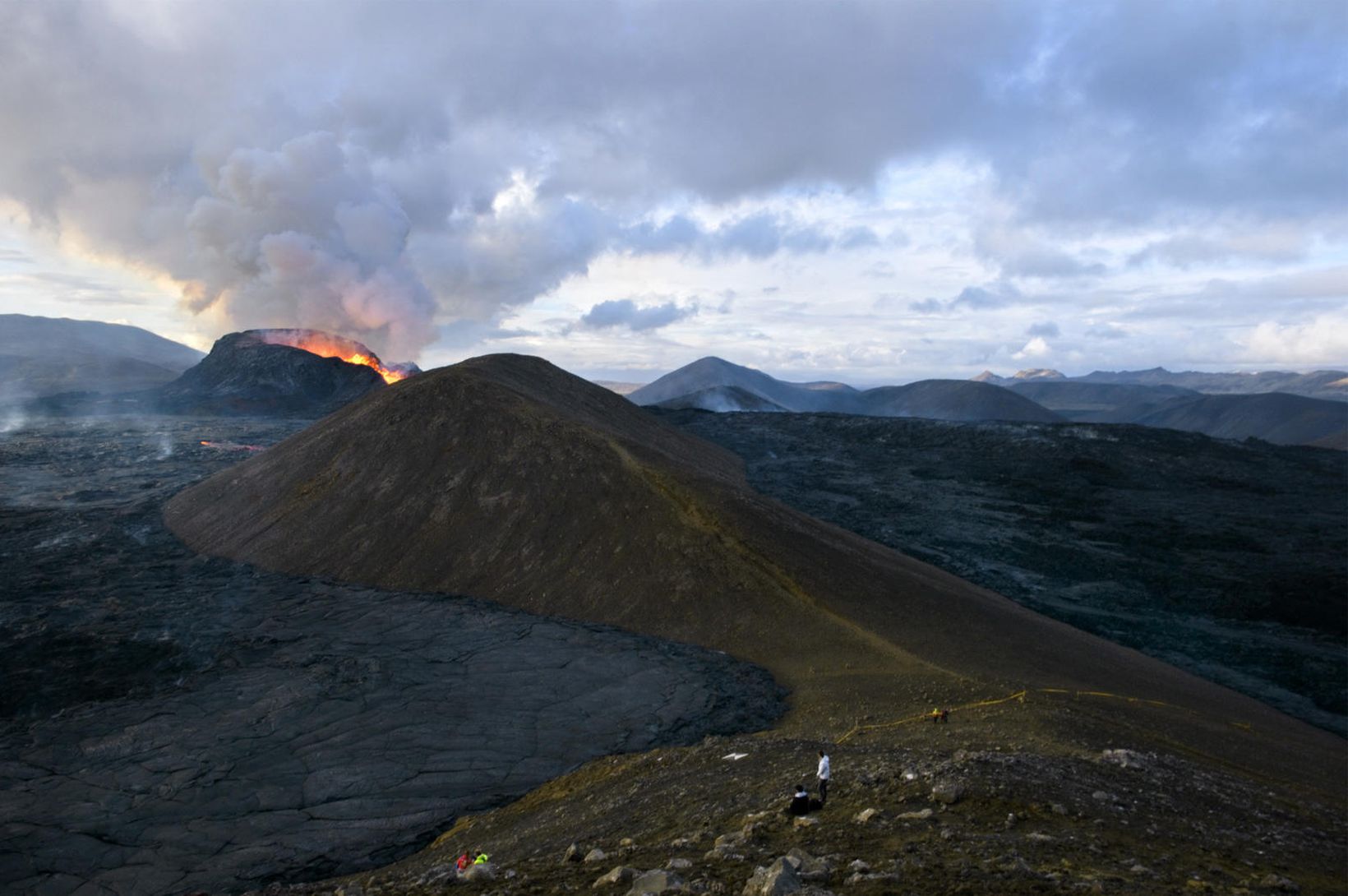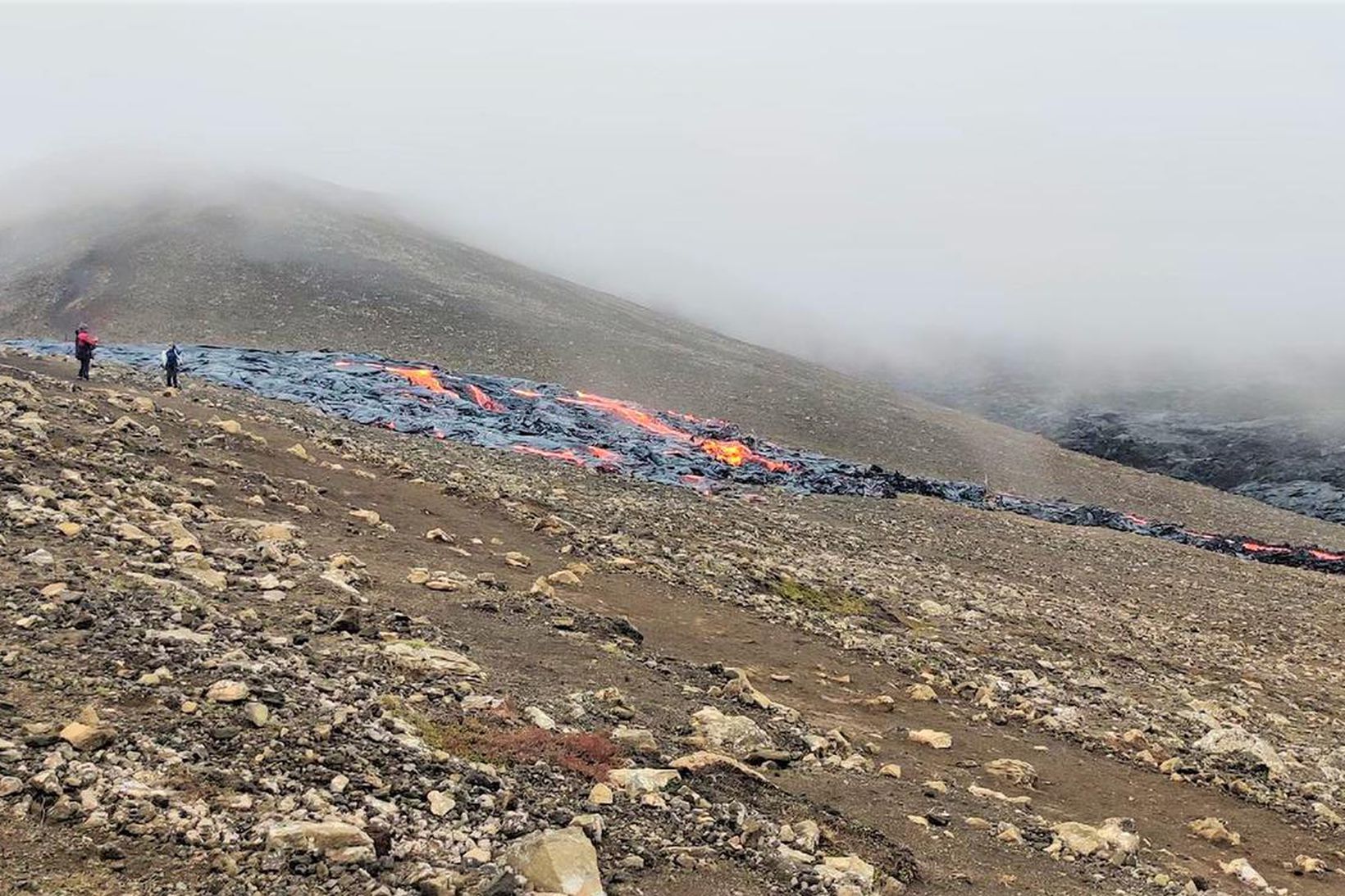The eruption in Reykjanes has gone on for 82 days, during which time scientist have had the opportunity to study and enjoy its progress and developments.
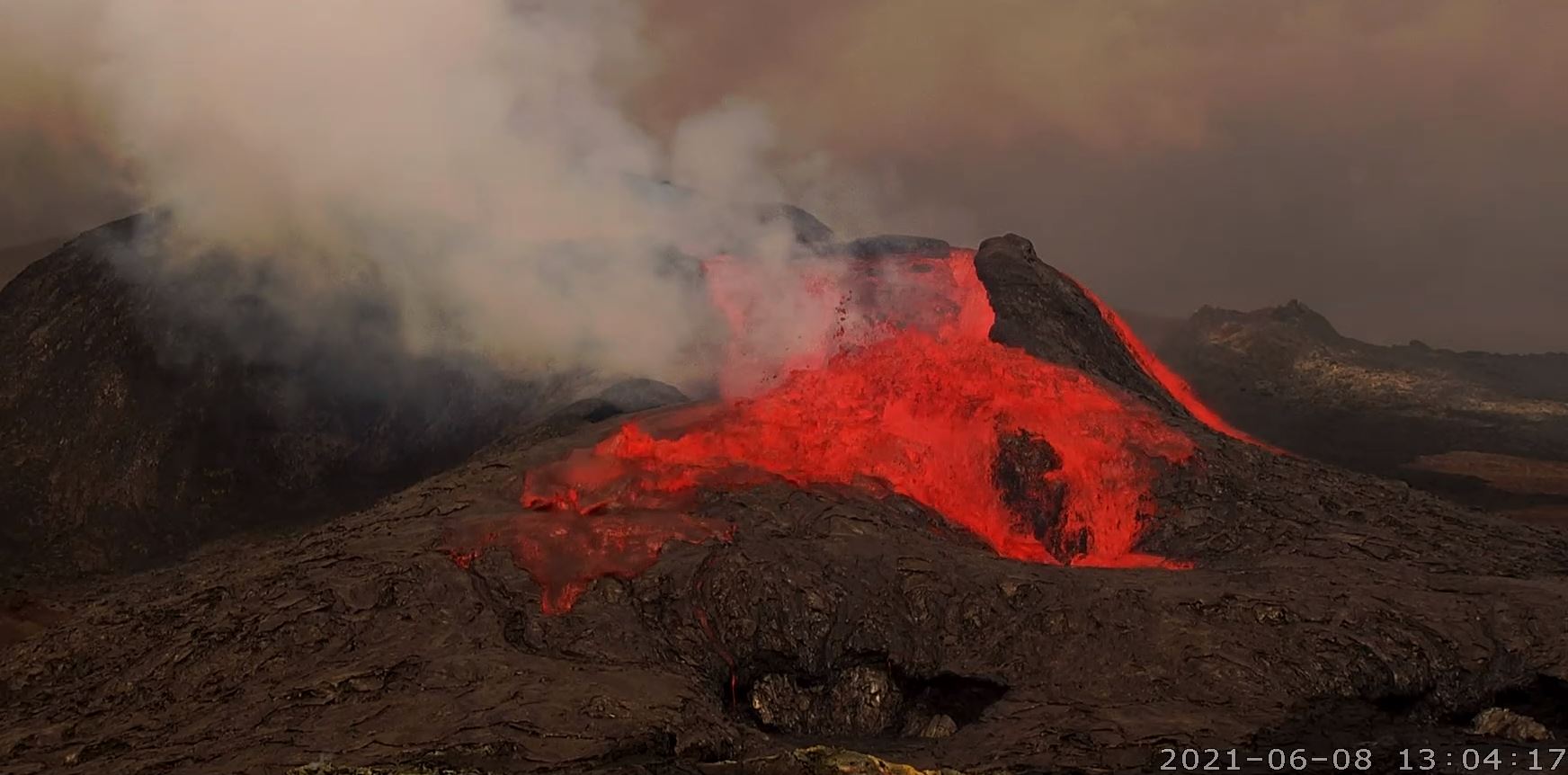
The event has not only brought a research opportunities for geoscientists.
On the 13th of May, workers in collaboration with Civil Protection and Verkís Consulting Engineers started building two 8 m high barriers in Syðri Merardalur with the aim to slow down the progress of the lava and to protect infrastructures such as the Suðurstrandavegur road, at least for some time. The barriers were built from close-by material and took only a few days to complete.
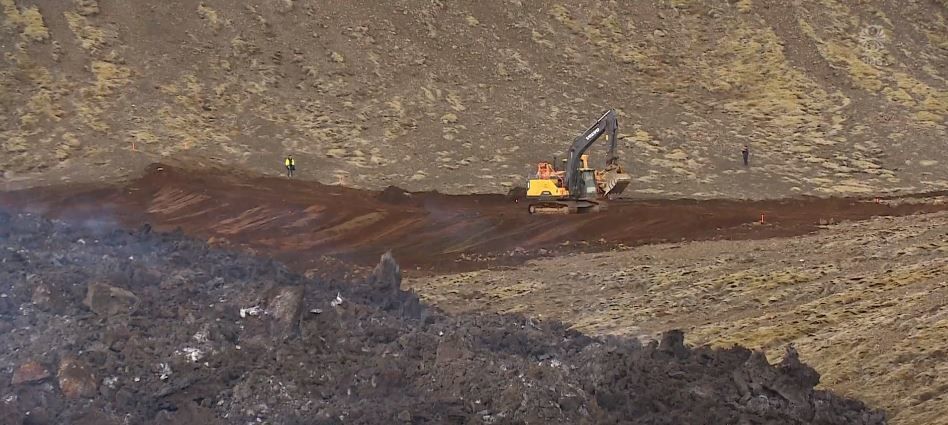
The progressing lava however found its way past the eastern barrier on the 22nd of May and it managed to flow over the western barrier on June 5th. Lava now flows into the valley of Nátthagi and towards the south coast.
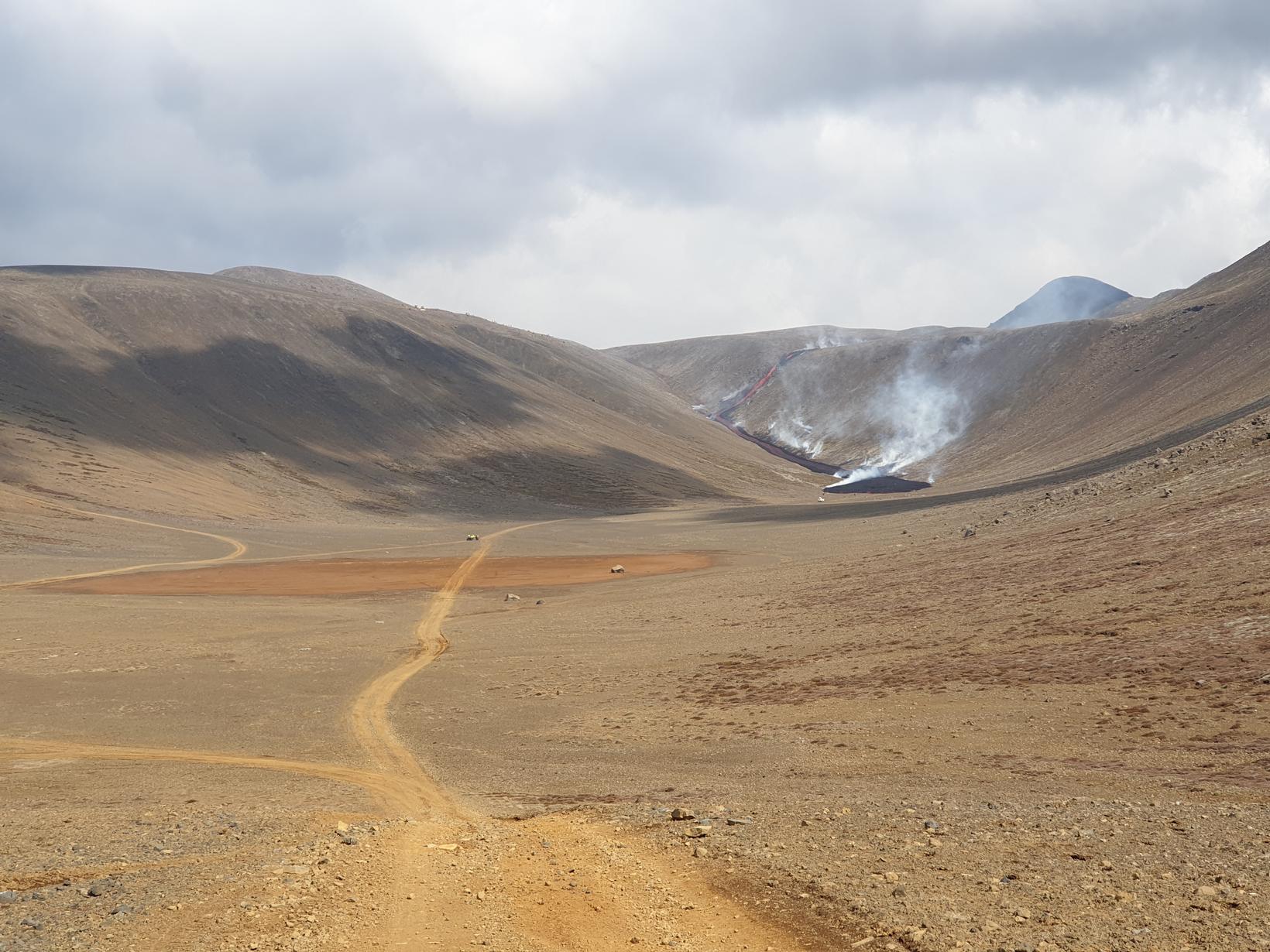
Since the beginning of the event, lava has erupted from six vents, most of which were short-lived and the activity is now in one vent which has produced lava fountains and erupts with episodic activity.
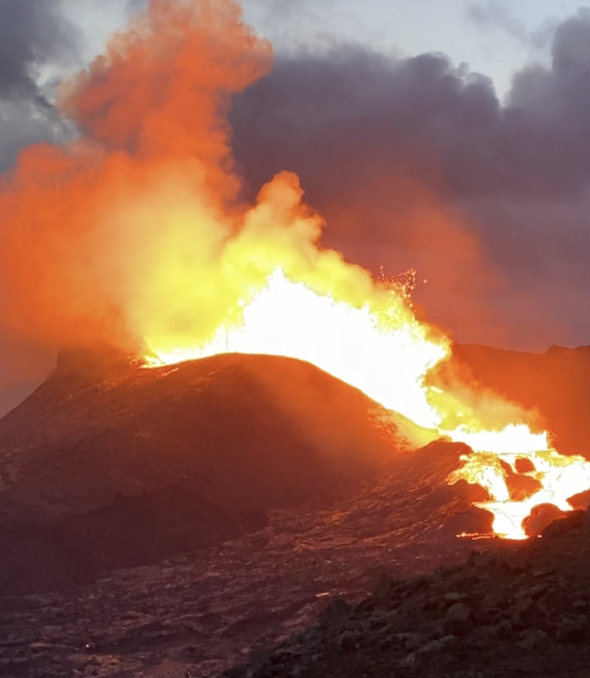
The eruption shows no signs of ceasing, quite the opposite, the lava discharge has increased for the past weeks and the average discharge rate from 18th of May – 2nd of June was 12.4 m3/s according to information published by the Institute of Earth Science at the University of Iceland: http://jardvis.hi.is/eldgos_i_fagradalsfjalli
Lava from Fagradalsfjall now covers an area of 2.67 m2 and its volume is 54.3 million m3 according to photogrammetry from an aircraft.
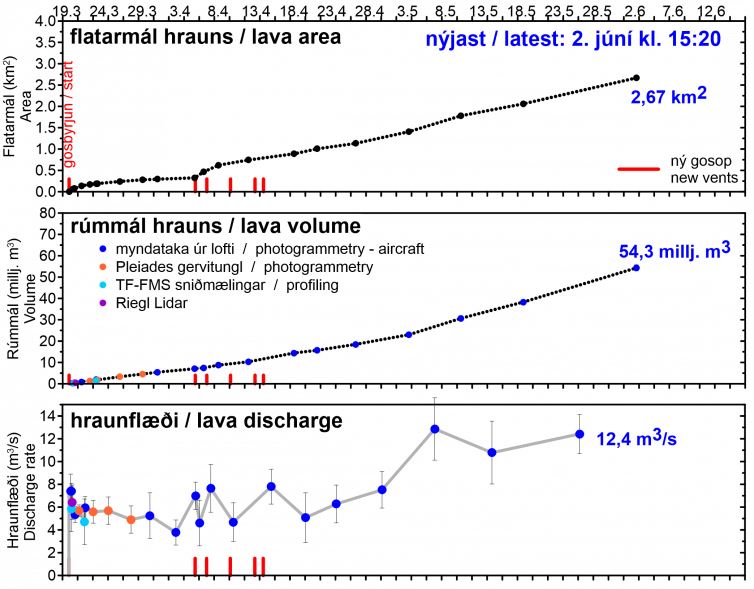

The site has been extremely popular with scientists and public alike and visiting the eruption has become what best can be described as a pilgrimage for many. Recently, the lava closed the walking path to the most popular hill to witness the scene.
